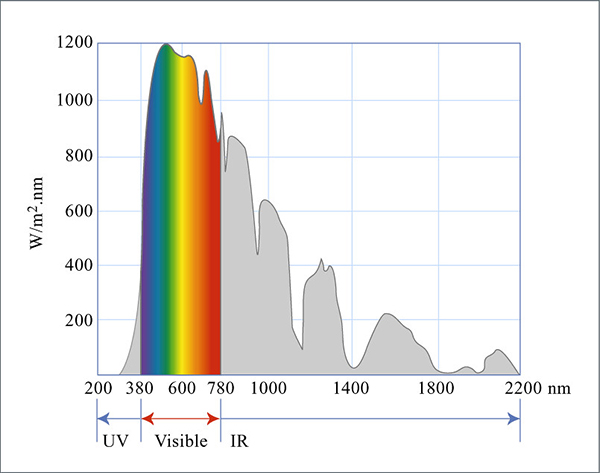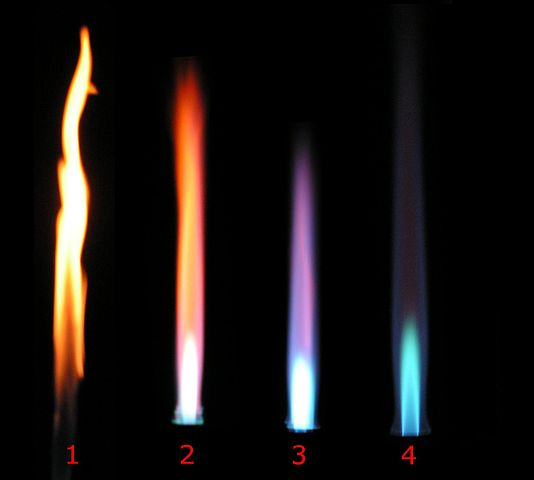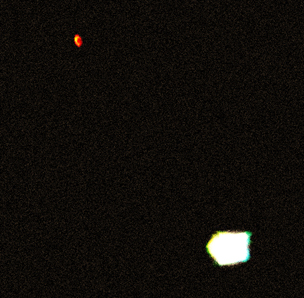Lauren Taylor is a guide and astronomer at Sydney Observatory and is currently studying a Bachelor of Science in Physics/Computer Science at the University of New South Wales (UNSW). In this post she discusses the colours of light emitted from the stars and our Sun.
Which colour of light do you think the Sun emits most strongly? I have asked this question many times to our visitors at Sydney Observatory, and by far the most popular answer is ‘yellow’. This seems very reasonable – the Sun does indeed appear a pale yellow when observed from the Earth – however you may be surprised to find out that our Sun’s light output actually peaks at green, as shown by the following diagram.

Sunlight is composed of all the colours of the rainbow (and even more colours that our eyes cannot see, such as UV and infrared), with some colours more present than others. This creates white light when mixed together. A classic demonstration of this is white light entering a glass prism and being split into its component colours – for an example, see Pink Floyd’s iconic ‘The Dark Side of the Moon’ album cover.
To understand why the Sun appears yellow, we need to consider how sunlight interacts with our atmosphere. There is a persistent misconception that the sky is blue because it reflects the ocean, when in fact it is because of the Rayleigh scattering of blue light. Rayleigh scattering occurs when sunlight hits the Earth’s atmosphere, exciting the gas molecules such as oxygen and nitrogen, making them oscillate and then re-radiate that light across the sky. This scattering occurs far more at shorter wavelengths, and since the shortest wavelengths our eyes can see are violet and blue light, and sunlight contains much more blue than violet light, we end up with a blue sky. Consequently, after the blue light is scattered away and thus removed from the white sunlight, the resulting sunlight is the pale yellow colour we observe coming from our Sun. This means that astronauts in space (above our atmosphere) observe our Sun as white. This, however, would not be the case for all types of stars.

Credit: NASA
Looking up at the night sky from Sydney Observatory, most of the stars appear uniform in colour. Some notable exceptions include the red supergiant stars: Betelgeuse in the summer night sky; and Antares in the winter night sky. The orange-red colour of these stars corresponds directly to their temperature. Take a typical high-school chemistry Bunsen burner, its flame burns blue at its hottest and red at its coolest. Similarly, hot stars emit light most strongly in the blue part of the spectrum, and cool stars emit most strongly in the red. However, even the coolest, “reddest” stars typically appear only orange to the eye.

Credit: Arthur Jan Fijałkowski [CC BY-SA 3.0 (http://creativecommons.org/licenses/by-sa/3.0/)]
Tying together the two concepts of the colours of stars and of Rayleigh scattering, however, are inarguably the most colourful stars in the sky – carbon stars. These rare stars are colour-enhanced thanks to Rayleigh scattering within the star itself, and shine a striking ruby-red.
Carbon stars are nearing the end of their lives, having run out of hydrogen to burn. Their cores have compressed sufficiently to reach the temperatures necessary to fuse helium into carbon and oxygen. The carbon and oxygen is dredged up from the centre of the star to the surface through convection. Occasionally, there will be more carbon than oxygen in old stars, and this extra carbon becomes like soot in the star’s atmosphere. You may have noticed the most brilliant sunsets occur after a bushfire, where the soot and other compounds in the air increase the Rayleigh scattering effect. The same effect is seen in carbon stars, where the light it produces must pass through the sooty atmosphere of the star, scattering away all wavelengths of light except for red.
My favourite carbon star is conveniently located next to the second brightest star in the Southern Cross. DY Crucis, commonly known as Ruby Crux, visually sits right next to luminous blue giant Beta Crucis (Mimosa), which provides the perfect colour contrast. It’s best to view during the winter months when the Southern Cross is high in the sky at a reasonable hour of night, but technically is visible all year round from the Southern Hemisphere. Some other carbon stars include V Pav (HIP 86728) in the constellation of the Peacock, and RT Cap (HIP 99990) in Capricornus. While none of these are visible to the naked eye, they are visible through binoculars or a small telescope and well worth the effort!

Image credit: Lauren Taylor


